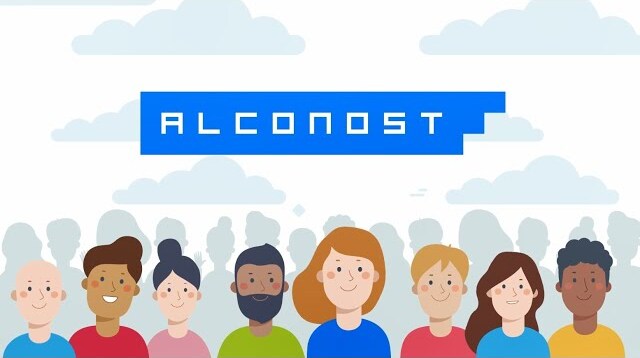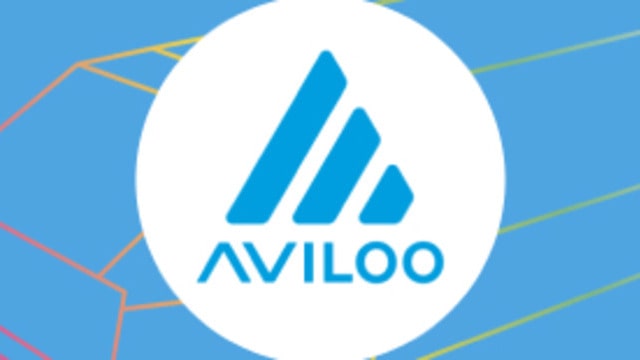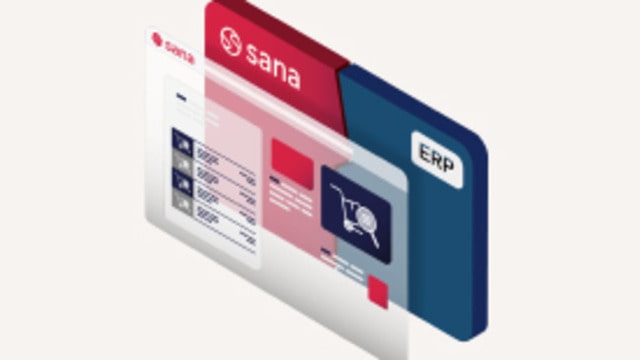Localization for
eSIM providers
Connect with travelers in their language, wherever they may roam, with culturally-relevant and precisely translated user support content.
Native-speaking and Culturally Relevant Buyer Experience
Your global buyers speak different languages. Make their experience as relevant as possible by translating their entire buyer journey, from marketing content to product support
Marketing
Website, Landing pages and Marketing Materials
Localize all content that helps you market your brand and product, from website and landing pages to blog posts and ads
Sales
Product selection and checkout workflow
Allow your buyers to purchase from you in their native language: from product descriptions to the checkout process and confirmation emails
User materials
Product interaction (web portal and mobile apps)
Localize your mobile app and web portal UI to provide a user experience personalized to their culture and language
Support materials
Support materials
Make it easier for your customers to become long-term customers and raving fans by translating support materials like help desk guides, knowledge bases, and FAQs
Clients who trust us include:
Scale up and speed your time to market with technology and process
Custom setup / integrations
We use what you’ve already got in place – your tools, integrations, and APIs can be conveniently added to your translation project
Cutting-edge localization platform
We will manage your project in the Crowdin TMS. If you are already using a localization platform, we can integrate with your current workflows
Continuous localization
Handle frequent updates with an agile, transparent, and scalable localization process backed by a dedicated team
All file formats
Don’t worry about file formats – we translate directly in your source file, from standard Word, .json, or .string, to more specialized formats
Accelerate your time-to-market with automated translation delivery
Customer success stories
We can customize a localization solution for you that drives global growth
Ready to go global?
Here’s your roadmap to get started.
Tell us about your project
Fill out the form to discuss your upcoming localization project, get a quote, and explore any of our localization services available in over 120 languages.
Launch the project
Our project manager will put together a team of the best-suited translators within your domain, compile a glossary, establish a workflow, and keep an eye on deadlines.
Stay in the loop
As the project progresses, keep track of timelines and quality in real time and communicate with translators within the cloud platform.
Ongoing translation
Upload new strings for translation as you update your product. Enjoy consistent translations due to leveraging translation memory and clear glossary definitions.
Tell us about your project
Fill out the form to discuss your upcoming localization project, get a quote, and explore any of our localization services available in over 120 languages.
Launch the project
Our project manager will put together a team of the best-suited translators within your domain, compile a glossary, establish a workflow, and keep an eye on deadlines.
Stay in the loop
As the project progresses, keep track of timelines and quality in real time and communicate with translators within the cloud platform.
Ongoing translation
Upload new strings for translation as you update your product. Enjoy consistent translations due to leveraging translation memory and clear glossary definitions.

Release all your languages at the same time
See how you can implement continuous localization into your agile production workflow.
Our certifications mean your project will comply with international quality standards
ISO 9001-2015
Translation Services – Requirements for Quality Management System
ISO 17100
Translation Services – Requirements for Quality Management System
ISO 18587:2017
Translation Services – Requirements for Post-Editing of Machine Translation Output
Years
Helping international customers get to know brands
Linguists
Creative, bilingual translators who love what they do and do it well
Projects
Completed, driving on-time, high-quality product launches that boost international growth
What Our Clients Say
Explore next-level language solutions to drive scale and growth
AI translation
A machine engine translates large volumes of content, followed by a translator who proofreads and edits the machine's output to ensure it meets the necessary quality standard.
Editing and Proofreading
Native-speaking editors improve previously written texts for grammar, syntax, punctuation, quality, and coherence, with an initial free assessment to evaluate the source text's quality.
Localization Quality Assurance
Native-speaking linguists go through your product to review it for grammar, punctuation, relevance of measurement units, stylistic consistency, and other cultural nuances.
FAQ
Tools & Integrations
What is a translation management system (TMS)?
A Translation Management System is a cloud software solution that streamlines the translation process. It centralizes collaboration between translators and stakeholders, automates workflows, ensures translation consistency, and improves efficiency in managing multilingual content.
These TMS tools help with continuous localization in the following ways:
- Updating strings: TMS tools simplify content updates with an “update” function, showing translators only the new, untranslated strings. The tool can also automatically sync the updated file by adding or removing strings from previous translations.
- Automation: You can configure a localization platform to automatically upload new strings to the project and bring them back seamlessly.
- Instant editing: TMS tools enable quick edits, allowing you to instantly fix things in an ongoing project. You can also comment on strings and use comments as an issue tracker.
- Collaboration options: Depending on their access level, users can collaborate simultaneously on a project. This includes adding new translators, approving strings, resolving issues, and more.
- Translation memory and glossary support: These features ensure consistent translations and unified terminology.
These are just a few features of translation management systems that make them exceptionally well-suited for Agile projects. Yet, compatibility with Agile methodology is just one advantage of TMS systems. Another significant benefit is their numerous options for integration with content management systems (e.g. Wordpress), repositories (e.g. GitHub, GitLab or BitBucket), help center systems (e.g. Zendesk) and other platforms.
What translation management systems do you work with?
Our first choice is the cloud-based translation platform Crowdin. With Crowdin, you can:
- Upload string resources in any format (.resx, .po, .strings, etc.) either manually or through the API
- Assign tasks to translators and editors within the platform
- Monitor the translation and editing process for your project in real time
- Engage with translators and editors directly through comments
- Build and manage glossaries
- Manage the translation memory
- Export string resources once the translation is complete
In addition to Crowdin, we are also expert in completing work in other localization platforms such as GitLocalize, Phrase, Lokalise, Memsource, memoQ, Smartcat, WebTranslateIt, Transifex, OneSky, POEditor, Trados, and many more.
What are some key features of popular TMSs?
The table below covers the key features of the most popular translation management systems.
| Crowdin | SmartCAT | Lokalise | Phrase | Transifex | POEditor | POEditor | 60+ | 60+ | 30+ | 40+ | 30+ | 20+ |
|---|---|---|---|---|---|---|
| Pricing | Paid plans. Free for open-source projects | Free with certain paid features | Paid plans. Free for open-source projects | Paid plans | Paid plans. Free for open-source projects | Free plan* (under 1,000 strings) |
| UI | Very good | Medium | Medium | Medium | Medium | Medium |
| Supported file formats | YES | YES | YES | YES | YES | YES |
| Translation memory/ Glossary | Available | Available | Available | Only for some paid plans | Available | Only for some paid plans |
| Activity log and statistics | Advanced | Medium | Advanced | Medium | Medium | Medium |
| API integrations | 70+ | 20+ | 40+ | 20+ | 20+ | 10+ |
| Mobile SDK (Android, iOS) | YES | YES | YES | YES | YES | YES |
| Source file pre-processing | Advanced | Basic | Advanced | Basic | Basic | Medium |
Good news: some translation platforms (Crowdin, Lokalise, Transifex, POEditor) are completely free for open-source projects!
How do translation memories and glossaries work?
Translation memory is a database that stores existing, approved translations for each segment of text, enabling the automatic reuse of already-translated words, phrases, and sentences.
Translation memory allows you to:
- Ensure consistency of terminology across an entire project
- Improve the quality of translation by leveraging previously approved translations
- Change translators mid-project without sacrificing consistency
- Save time by automatically inserting translated repetitions
- Boost the efficiency of your translation team
Each client's account has a confidential translation memory. All data is stored securely.
A glossary helps maintain project consistency across languages. It’s a special dictionary with definitions, translations, and usage examples of key product/industry terms. This dictionary can be used within an automatic translation tool to expedite the translation process and ensure consistency of terminology across one or more texts. The use of a glossary makes it possible to assign multiple translators to a project and provides flexibility in changing translators during the process if needed.
If there is no glossary, we can create one from scratch.
What file formats do you work with?
We work with any file type and offer customized integrations for your convenience.
Here are some of the most popular file formats for our projects:
- Android: .xml
- iOS: .strings, .stringsdict
- Windows: .resx
- Others: .po, .pot, .php, .json, .ini, .csv, .js, .plist, .xlf, .xliff, .stf, .dita, .ditamap, .toml, .gotext.json, .arb, .vdf, .wxl, .nsh, .properties, .dtd, .ts, .rc, .resw, .resjson, .yml, .htm, .html, .xhtml, .haml, .txt, .md, .xht, .idml, .docx, .svg, .pdf, .xaml, .srt, .vtt, .sbv, .mif, .idml, .rtf, .ppt, .odt, .ods, .odg, .odp, .wiki, .flsnp, .flpgl, .fltoc, .md, .xht.
Let's discuss your project and find the best solution for your needs!
I need it fast. How can I expedite the localization process for my eSIM application?
We automate the translation workflow, without compromising translation quality or diminishing human creativity.
If you're looking for a quick solution, our self-service human translation platform, Nitro, offers an API compatible with all programming languages (Python, JavaScript, Java, PHP, etc.) and platforms (iOS, Android, etc.). The translation API is free; you only pay for the translation volume. It's your go-to tool for swift translations like ads, in-game content, website copy, and more, with a turnaround time of 24 hours – perfect for urgent tasks. Learn more about Nitro API or go straight to the API documentation.
For larger localization projects, we use professional translation APIs and Translation Management Systems (TMSs) to streamline the process, reduce back-and-forth, and keep lines of communication clear and simple. We're also open to working with translation and localization APIs of your choice upon request. If you have specific preferences or questions, let's discuss your project.
How does API translation automation work?
To automate translation within your CMS or advertising platforms, we work with translation APIs. We will tailor a solution for you. For example, translation management systems like Crowdin allow you to integrate localization into your development process and dynamically translate text through the API. We also have our own human translation API, Nitro, where translations are performed by professional linguists within 24 hours and you pay as you go, with no back-and-forth. If you have questions or want to explore solutions for your team, let's talk.
How can I offer multilingual customer support?
If having a full-time team of native-speaking support specialists is currently beyond your budget, one effective way to provide essential support for your international users navigating your product is by developing a multilingual knowledge base. Alconost can localize your support materials into over 120 languages, leveraging the cultural and linguistic expertise of our professional native-speaking translators from your target locales. Another cost-effective option for high-volume texts, such as a multilingual knowledge base, is our Machine Translation Post-Editing (MTPE) service. This service can help you save costs up to 40% compared to traditional localization projects, all while maintaining high standards of quality.
To explore customized solutions for your team, feel free to reach out.
Process & People
What languages do you translate into?
We provide translation services in 120+ languages, including not just the widely spoken ones like English, Chinese, Japanese, German, French, and Spanish, but also rare languages and dialects.
We can find a translator in almost any language that you need. Sometimes, localizing into niche languages can offer better prospects than localizing into mainstream languages.
What languages should I translate into first?
To determine the most promising languages for translation, we've examined the number of native speakers who are Internet users, the total volume of online sales, and Google Play revenue by region. Based on this analysis, here are the top 10 languages for localization:
- English for the United States, United Kingdom, Canada, and Australia
- Chinese for China and Taiwan (Simplified and Traditional Chinese)
- Japanese for Japan
- French for France, Canada, and Belgium
- German for Germany, Belgium, Austria and Switzerland
- Russian for Russia
- Korean for South Korea
- Spanish for Spain, Mexico, and Argentina
- Portuguese for Brazil
Additionally, we conduct annual in-house research on the most popular languages for localization from English. To access the 2023 report, follow the link to download the white paper.
Keep in mind that the choice of languages depends significantly on your product type and business objectives. For example, localization into niche languages can sometimes offer better marketing prospects than mainstream locales. So, always keep your product in mind.
If you have questions or want to explore solutions for your team, let's talk.
How do you calculate the cost of translation?
The translation cost depends on a few factors: the language pair (source and target), text volume, and repetitions.
For the pay-as-you go model, the translation cost is calculated per 1000 characters, spaces included. HTML element tags aren't counted when assessing the text volume.
No subscriptions here – you pay as you go for the precise amount of work completed. Check out our list of languages and rates. These are approximate rates that might slightly vary depending on additional factors. For a localization cost estimate, kindly send your text to info@alconost.com or fill out this form.
How do you select translators for my project?
At Alconost, all translations are carried out by professional linguists who are native speakers of your target language.
We have a pool of over 800 carefully selected native-speaking linguists, each with specialized industry knowledge. Every translator in our database undergoes rigorous preliminary testing, including portfolio review, and a translation test. Around 2.5% of applicants pass the selection process and proceed to work at Alconost.
For each project, we handpick translators with specialization in the required domain. Our localization managers consider the training and professional background of translators to ensure the best match between project needs and the translator's qualifications. This approach enables Alconost to deliver accurate translations across a spectrum of projects, from promotional websites, travel landing pages, and online stores to corporate websites for multinational companies.
We typically assign one or more translators to your project, maintaining a consistent working relationship with them. This is beneficial if you have large projects with periodic updates, or if you simply prefer a specific translator's style. In the rare event of a translator change, we provide the glossary and translation memory to the new translator, ensuring consistency in terminology and style for future updates.
Our translators are well-versed in various design languages, technologies, and platforms. Whether it's translating a mobile app, a Wix or WordPress site or providing continuous website content translation for Magento, Shopify, Salesforce, and other eCommerce projects, translators on your project will be familiar with the platform requirements.
Learn more about our internal approach to achieving class-leading translation quality here.
Do we get our own localization project manager?
Localization project managers are assigned to guide you through every step of the translation process, from start to finish.
Here's what they do:
- Review the texts, your requirements, and any notes about the translation.
- Calculate the cost of the localization project and approve a budget with you.
- Handpick translators with the necessary background.
- Ensure the correct formatting of the finalized translations.
- Drive project deadlines.
- Assign editors to proofread the translations (optional).
- Draft all required documentation (agreements, invoices, certificates, etc.).
- Answer all your questions and do everything to ensure you are satisfied with both the process and the result!
What’s the best approach for localizing our eSIM product?
Our localization project managers can assist you in choosing the best approach for localizing your eSIM marketplace, whether through translation within source files, your CMS, or a cloud-based localization platform. Your chosen method will determine how you receive the translated content:
- If you provide texts as formatted files (HTML, .string, .json, or other formats), you'll receive the translated texts back in the same format.
- If you give the translation team access to your CMS, our translators will work online directly within your content management system.
- If we localize your website using a project management platform (GitLocalize, Phrase, Lokalise, Memsource, Memoq, Smartcat, Webtranslateit, Transifex, OneSky, POEditor, Trados, or a similar service), the finished translations will be available on this platform. You can then manually or automatically publish them on your website through an API. This platform-based translation is ideal for multilingual or frequently updated products requiring continuous localization.
Once the localization process is established and refined, translations can be seamlessly updated automatically as you edit existing content or add new material to the primary language version of your product (i.e., continuous localization). This approach allows localization and development to progress simultaneously, reducing the time-to-market for your updates.
I have an existing localization solution. How can your services complement or enhance my current setup?
Our approach allows for collaboration with multiple vendors, providing you with added flexibility and scalability and broadening the capabilities and specializations of your language resources.
As an enhancement to your current localization workflow, we can provide localization consulting, broad support of formats, fast delivery times, and a team of over 800 translators, localization managers, and vendor managers ready to meet all your translation needs.
We offer sustainable, quality-compliant business translation services for global organizations. Whether you require translations for marketing materials, websites, presentations, business documents, or any other content, we're here to assist:
- With proficiency in over 120 languages, we’ll connect you with professional native-speaking translators.
- For rare languages, we can recruit and test translators specifically for your project.
- Our project manager will build an efficient workflow and stay connected with you almost around the clock.
Please share your project needs and requirements, and we’ll promptly provide you with a quote and a tailored solution.
How do you handle complex translations and integrations?
For intricate and highly specialized projects, we engineer a customized localization process that will account for all technical, linguistic, or industry complexities. This might involve translation with localization software, utilizing APIs to upload translated text directly into the product, handling Shopify localization, offering extensive format support, setting up glossaries and translation memory, or implementing automations to drive quality or speed up work.
Please share your project needs and requirements, and we’ll promptly provide you with a quote and a customized solution.
Quality
How do you ensure the quality of translation services?
We implement a seven-step internal quality assurance process for our translation projects. This includes quality checkpoints throughout the entire project, regular quality assessments of our translators, analysis of client feedback, and the use of a specialized platform for quality checking.
In the rare instances of an inaccuracy in the translation, we correct the mistake at our expense, conduct an analysis to understand why the error occurred, and implement measures to prevent such errors from happening in the future.
For more insights into our internal approach to achieving top-notch translation quality, you can find additional information here.
How do you address cultural nuances in your localization services?
Our translators, who are native speakers with a minimum of two years of experience in localization, possess an innate cultural understanding of your target market. As professional bilingual linguists, our translators are skilled at providing the most appropriate translation for the culture and context, which is not always the literal translation. They propose translations that resonate with your audience, sounding both local and familiar. Importantly, these translations are crafted to be respectful and appropriate within the diverse political, economic, and cultural contexts of your audience. If there’s ever any ambiguity in interpreting the source text, translators proactively engage with the client to clarify the context.
What is localization quality assurance (LQA)?
Localization Quality Assurance (LQA) is a systematic process used to assess and ensure the accuracy, cultural appropriateness, and overall quality of localized content. LQA involves evaluating translated materials, websites, software, or any other content that has undergone localization to confirm that it meets the intended standards and effectively resonates with the target audience.
We offer professional linguistic testing for eSIM marketplaces. Our linguists, equipped with testing experience, meticulously examine the translations in context. Additionally, they identify and report any UI and functionality bugs.
Our linguistic testers are proficient in various design, testing, and project management tools, including Figma, Jira, Asana, Trello, TestFlight for iOS product testing, BrowserStack, and other bug reporting tools and software.
Explore more about our localization testing services or request a quote.
What is editing and proofreading?
Editors focus on refining the language, organization, and flow of the text. They may address issues related to grammar, punctuation, and sentence structure, ensuring that the writing is clear, concise, and logically organized. Proofreaders focus on the finer details of the writing, such as typos and inconsistencies, to ensure that the final version is free from language-related mistakes.
Proofreading is typically necessary if a non-native speaker or someone not professionally versed in linguistics worked on the translation before. For highly specialized texts, proofreading is recommended to ensure precise term choices aligned with context. It's also advisable if a translation lacks context consideration, like translating interface elements without considering their position.
You can hire an editor from Alconost to proofread your localized content. Alternatively, you can order proofreading via Nitro, our self-service translation platform. In both cases, the editor, like the translator, will be a native speaker of the target language.
Learn more about our proofreading and editing services or request a quote.
Need help with customizing your eSIM product for global customers?
We can’t wait to work with you!
Let’s talk about your project
Fill out the form to get your free quote. 24h response guaranteed • No commitment required

























